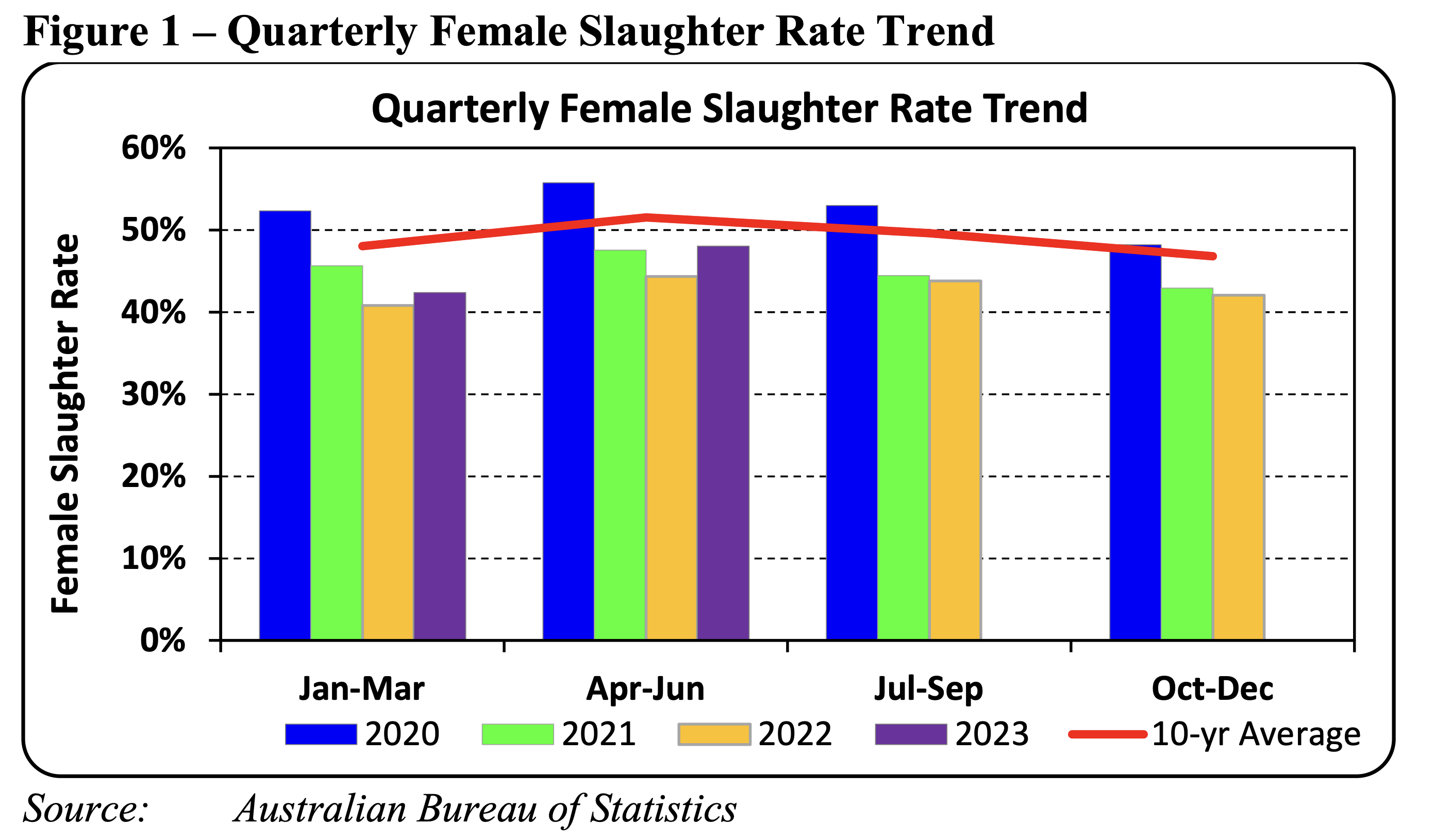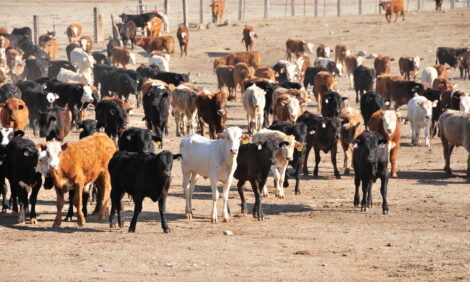



Australian herd rebuild nears endpoint - GAIN
Cattle production expected to decline over last yearAustralian cattle production in 2024 is forecast to decline from the prior year, according to a recent US Department of Agriculture (USDA) Global Agricultural Information Network (GAIN) report. The key factors are that female slaughter rates have begun increasing in 2023 indicating that the herd rebuild, including breeder numbers, is nearing its endpoint. This is following a national herd growth period subsequent to the multi-year drought in 2017 to 2019. A further factor is that the forecast of dry conditions is expected to have some negative impact on conception and subsequent birthing rates after recent exceptional seasonal conditions.
Female slaughter rates are anticipated to return to around long-term average levels in 2024 after the trend of low slaughter rates in 2021 and 2022 began to moderate from the start of 2023 and in particular the second quarter of 2023. This marks the start of the slowdown in the growth of Australia’s beef herd which is expected to continue into 2024.

The Australian Bureau of Meteorology has issued an El Niño alert last year. If all El Niño indicators are met and conditions progress to an El Niño event, then decreased rainfall will be a reality for much of Australia. Lower feed availability in spring when most cattle in the temperate regions are mated may have some negative impact on conception rates and subsequent birth rates in 2024.
Much of Australia’s cattle production is in the northern parts of Australia, which is influenced by the tropical wet season rains, mainly from December to March each year. Whether or not the looming El Niño forms and subsequently persists to negatively influence the tropical wet season rains in 2024 is yet unclear. However, most beef calves in the tropical north are born during the wet season period so the birth rates are unlikely to be impacted if an El Niño forms and persists in the upcoming wet season period but could affect conception and birth rates for 2025.



